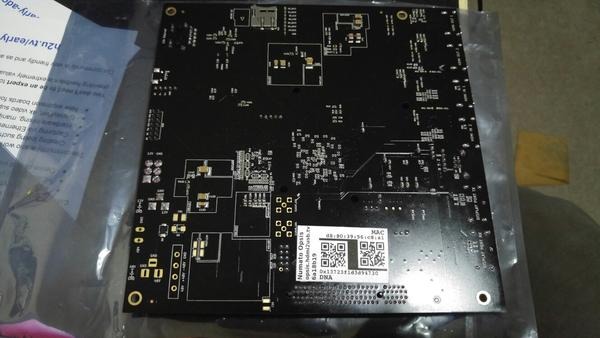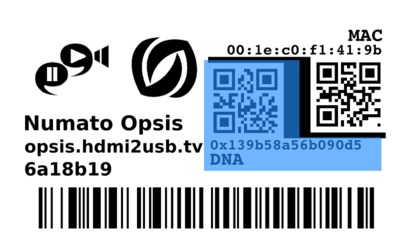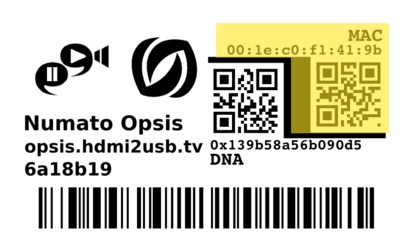Label
The label attached to the Numato Opsis label contains important details about your device.
The details on the label found on the box should match the details of the label attached to other packaging and the board itself.
Spare labels where included in the Opsis packaging for when the board is mounted inside a Case.
The preproduction boards shipped without this label information. If you with to add it to your board, they can be generated using HDMI2USB-mode-switch tool.
Layout
The Opsis label comes in a couple of different variants to allow it to fit in different size areas.
Large Label


Small Label

Micro Labels
Board Details

The barcode is a Code 128 which encodes the Opsis website and serves as a "product identification code".
The short sequence of numbers is a short git hash which refers to the revision in the Numato Opsis hardware repository that the PCB was generated from.
This information is also embedded in the EEPROM too.
Device DNA

From Spartan-6 FPGA Configuration User Guide UG380 (v2.7) October 29, 2014
Spartan-6 FPGAs contain an embedded, unique device identifier (device DNA). The identifier is nonvolatile, permanently programmed into the FPGA, and is unchangeable, making it tamper resistant.As shown in Figure 5-14, the device DNA value is 57 bits long. The two most-significant bits are always 1 and 0. The remaining 55 bits are unique to a specific Spartan-6 FPGA.
The FPGA's internal device identifier, plus any values shifted in on the DIN input, can be read via the JTAG port using the private ISC_DNA command. This requires the ISC_ENABLE to be loaded before the ISC_DNA command is issued.
Bit 56 of the identifier, shown in Figure 5-14, appears on the TDO JTAG output following the ISC_DNA command when the device enters the Shift-DR state. The remaining Device DNA bits and any data on the input to the register are shifted out sequentially while the JTAG controller is left in the Shift-DR state. When this operation is complete, the ISC_DISABLE command should be issued.
MAC Address
Each Opsis board contains an EEPROM which is read only, a globally unique, Ethernet MAC address.
This MAC address is printed on the label and encoded in the QR Code

Reading QR Codes
Both the Device DNA and the MAC Address are encoded on the label using a QR Code.
QR Codes are readable by a wide range of devices, including mobile phones.
